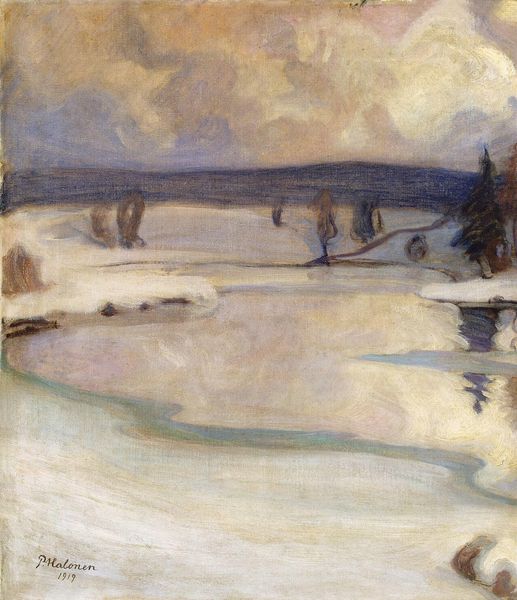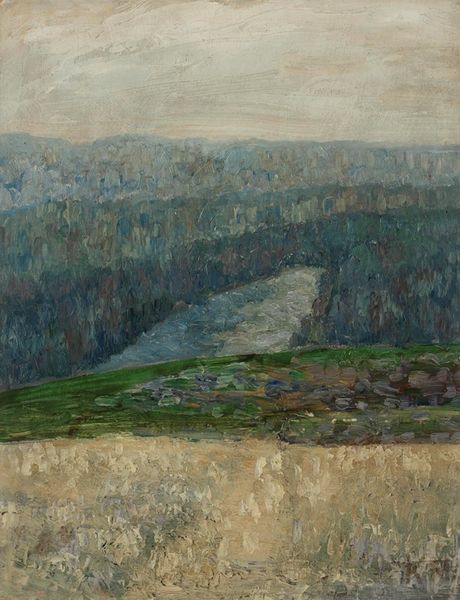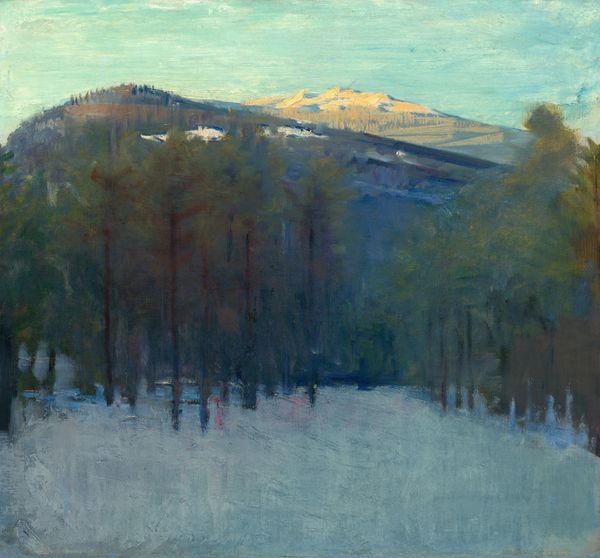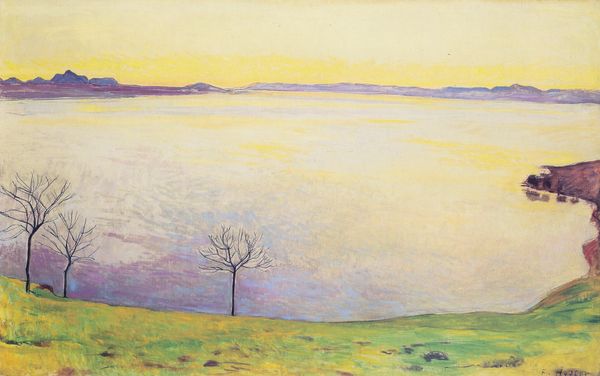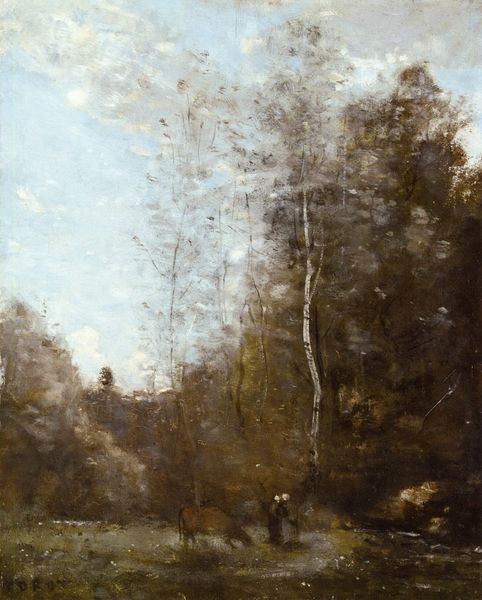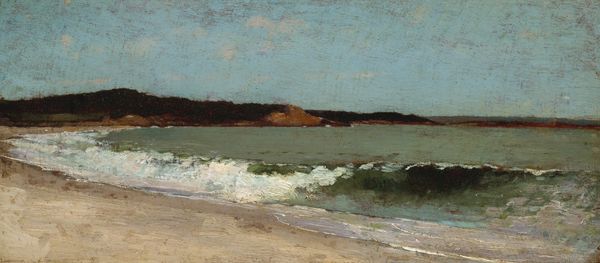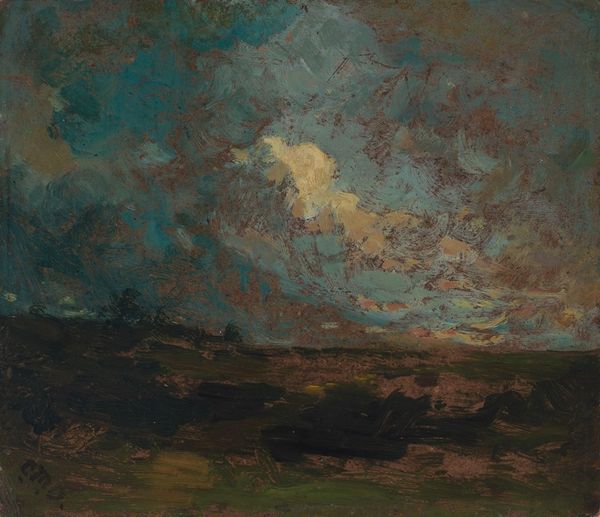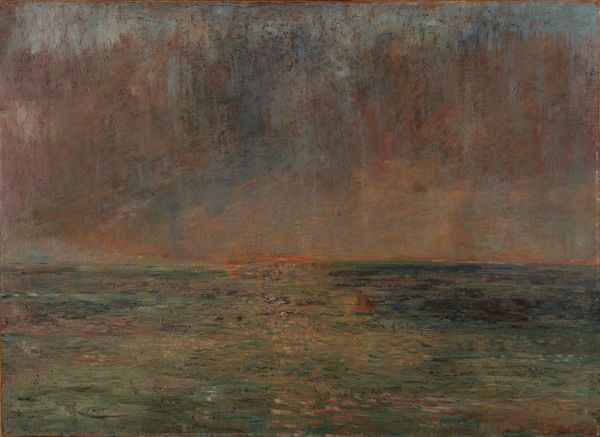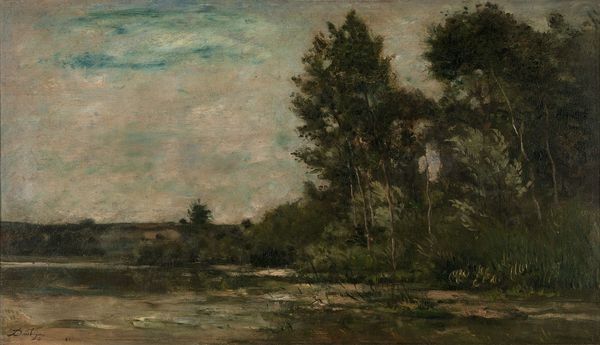
Dimensions: 30.5 × 25.1 cm (12 × 9 7/8 in.)
Copyright: Public Domain
Editor: This is John La Farge's "Snow Field, Morning, Roxbury," painted in 1864 using oil paint. There’s a certain stillness to it, a quiet that feels almost unsettling. What is your interpretation of this work? Curator: This painting appears deceptively simple. Consider the context: 1864, during the American Civil War. Landscape painting held a potent social and political position, often reflecting ideas of national identity and anxieties about the nation's future. Does this mood change the way you view the piece? Editor: It does shift my perspective a little. I mean, it's easy to just see it as a pretty scene, but the war would definitely have been on people's minds at that time. Were landscapes often used for this purpose during the Civil War era? Curator: Precisely. Artists often imbued landscapes with allegorical meaning, using nature to express sentiments about the conflict, loss, and hope for reconciliation. A seemingly innocent snowfield could symbolize the cold harshness of war, or perhaps the blank slate upon which a new nation might be built. Editor: The colors are so muted too, like everything is drained of life, except for those trees. Maybe they symbolize resilience? Curator: Perhaps, and it may even touch upon contemporary social dynamics related to race relations. One could consider how this rural landscape reflects the societal undercurrents related to the ongoing fight for liberation. Do you feel the perspective might shift based on our own personal contexts and cultural background? Editor: I hadn't thought about it in that way before, but it makes sense to consider the various angles to properly understand it. Curator: Art like this really teaches us how much context matters, it really reframes our perspectives. Editor: Absolutely, it's amazing how much history can be embedded in a single painting.
Comments
No comments
Be the first to comment and join the conversation on the ultimate creative platform.
